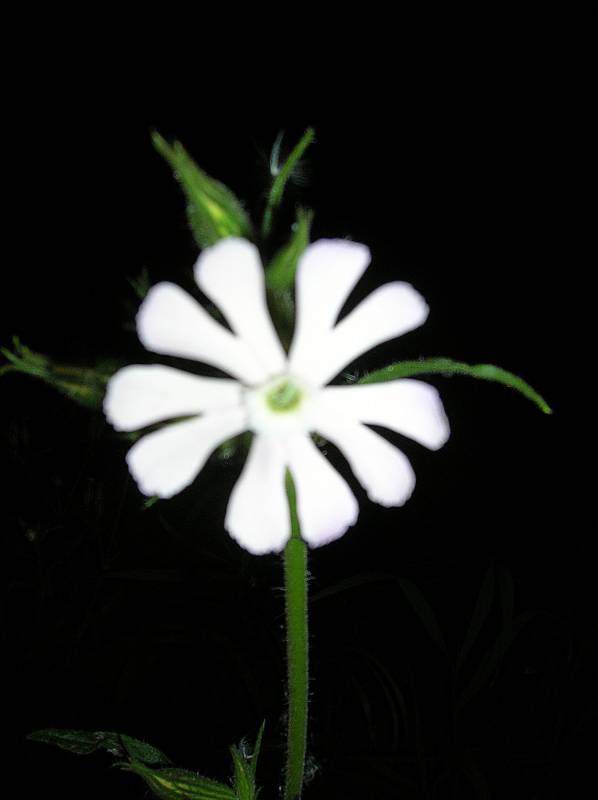Silene noctiflora
Silene vulgaris
night-flowering catchfly
bladder campion
Leaves opposite, ovate-lanceolate to elliptic-oblanceolate, 5-12 cm. long and up to 4 cm. broad, the lower ones long-petiolate, the upper sub-sessile.
Leaves opposite, ovate-lanceolate to oblanceolate, 3-8 cm. long and 1-3 cm. broad.
Flowers few to several in an open inflorescence, the pedicels 3-30 mm. long;
calyx 5u00e2u20acu201clobed, tubular, 15 mm. long at flowering, much enlarged in fruit, 10-nerved, the lobes lance-linear, 5-9 mm. long;
petals 5, white to pinkish, glabrous, the claw 12-25 mm. long, auriculate above, the blade 7-10 mm. long, bi-lobed less than half the length;
blade appendages 2, 0.5-1.5 mm. long and broad;
stamens 10;
styles 3. Flowers open at dusk.
Flowers several to many in an open, rather flat-topped inflorescence, with narrow, inconspicuous bracts;
calyx 5-lobed, bell-shaped, 1 cm. long at blooming, but inflated and up to 2 cm. long in fruit, pale green to purplish, glabrous;
petals 5, white, the claw about 1 cm. long, expanded above, the blade 4-6 mm. long, deeply bi-lobed; appendages at the base of the blade 2 and minute, or lacking;
ovary stalk 2-3 mm. long;
stamens 10;
styles usually 3.
Capsule 3-celled.
Capsule 3-celled.
Silene noctiflora
Silene vulgaris
- Local floras:
BC,
CA,
OR,
WA
- Local Web sites:
CalFlora,
CalPhotos,
Flora NW,
PNW Herbaria
WildflowerSearch
iNaturalist (observations)
USDA Plants Database
- LBJ Wildflower Center
- SEINet
- Plants of the World Online
- Encyclopedia of Life
- Wikipedia
- Google Image Search
- Local floras:
BC,
CA,
OR,
WA
- Local Web sites:
CalFlora,
CalPhotos,
Flora NW,
PNW Herbaria
WildflowerSearch
iNaturalist (observations)
USDA Plants Database
- LBJ Wildflower Center
- SEINet
- Plants of the World Online
- Encyclopedia of Life
- Wikipedia
- Google Image Search



